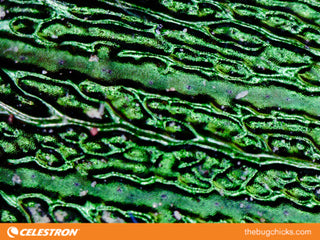Wings (Part Two)
February 7, 2016
In last week’s post, Wings: Part One, I showed the wings of a wasp and a treehopper. This week I’m going to juxtapose two of the most well known insects in the world- a cockroach and a butterfly.
Below is an American cockroach. This is one of the most widespread and reviled pests in the world. They run fast and fly at people who are very afraid of them. (In fact, I’d love to do a study to see if there’s a correlation between roaches flying in the direction of people who are screaming the loudest. I think there’s something there. I smell Ph.D.)
I’m not even sure people ever get a good look at roach wings. I think they can be rather beautiful. From this far away they look a bit leathery and simple- like the veins are just straight lines that extend to the wing margin.
Under the microscope you start to see just how intricate the wing venation is on a roach. They have lots of little breaks and connections between the main veins. I particularly like the sheen on them and how they turn iridescent under the light. While I was getting this shot I saw green to yellow to red to brown as I turn the insect on the pin. This shot is not incredibly successful for a couple of reasons. I tried to put two shots together that had different focal points. Can you see the seam? This is why actually using a good stacking program can be useful. But, I’m not afraid of learning and showing you mistakes along the way.
Butterflies. Who doesn’t love them? They are big and gentle and pretty. We are told as children not to touch them because we could rub their scales off and then they aren’t able to fly. This is not exactly true. They can still fly without their scales. In fact, as a kid I used to rub butterfly wings and put the shiny stuff on my eyelids for eyeshadow. I was a horrible child. I make up for it now by educating others. I sleep just fine.
When looking at this (slightly damaged) swallowtail I was interested in looking closer at the whitish spots on the hind wings. What would they look like under the scope?
I love love love this shot. It really captures the layered ‘fish scale’ effect of Lepidoptera scales. And that whitish spot? It looks like a bit of a messy random overlay of pearly translucent scales that were brushed on top of the green/brown/black. This picture is a great example of the order in nature (check those straight lines of scales!) and randomness (those white scales) that from far away look a lot more ordered than they are up close.
I enjoyed this little exploration. I think I will do the same thing with antennae and maybe tarsal claws! Again, these scope shots were taken with the Infiniview from Celestron. It’s a great tabletop scope for the classroom or a kid who wants to get closer to the tiny universe all around us.






























